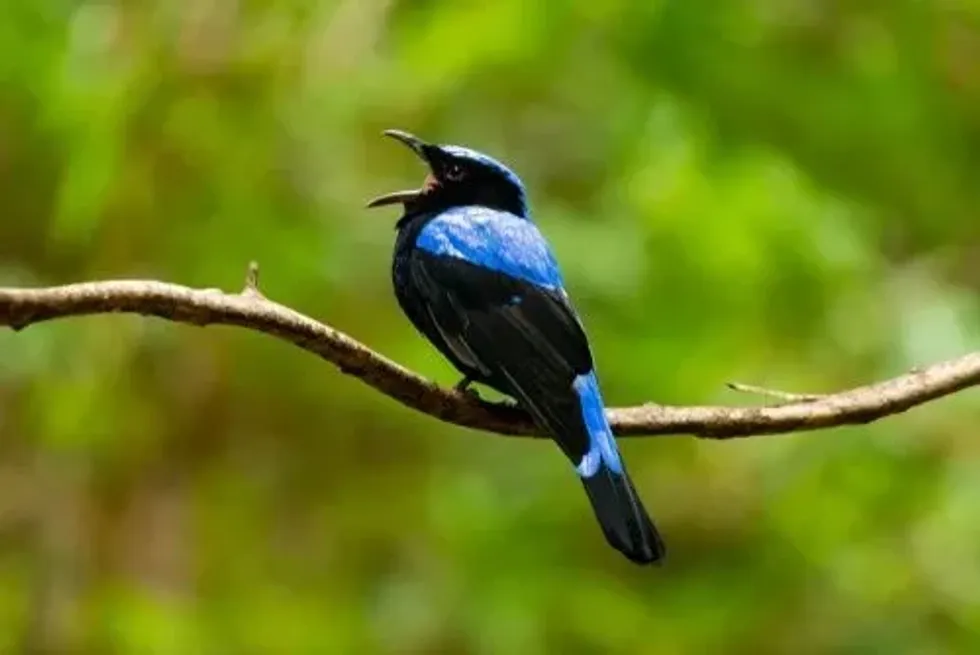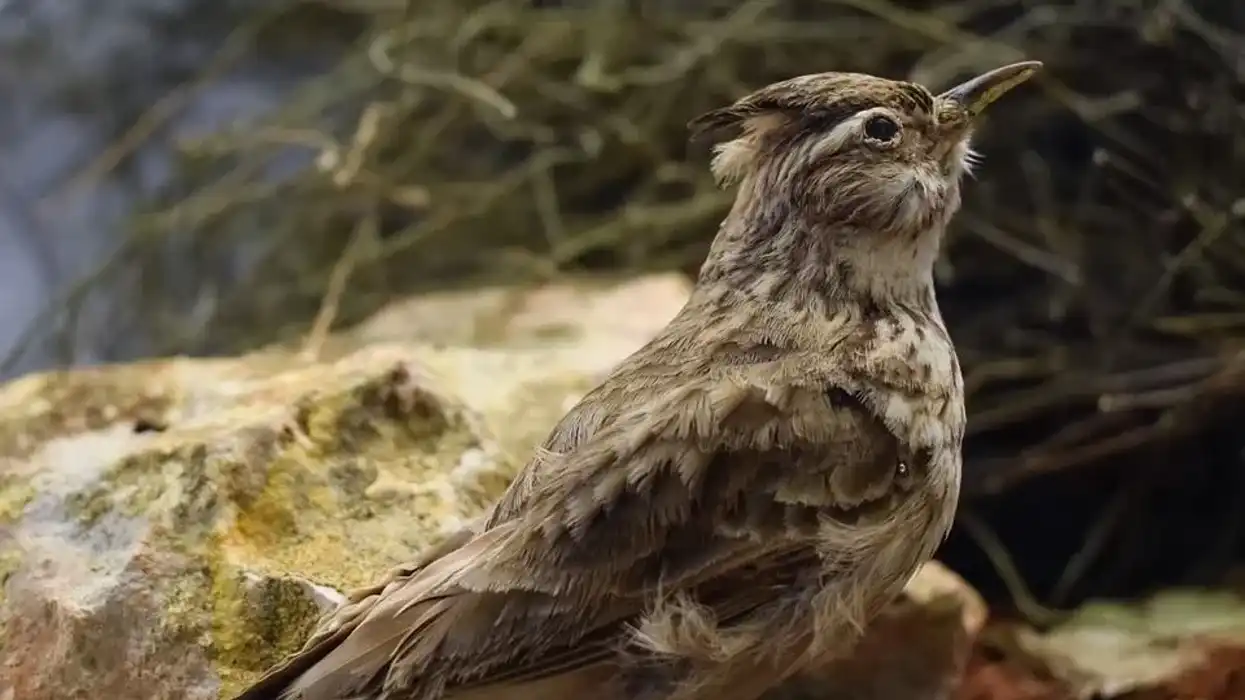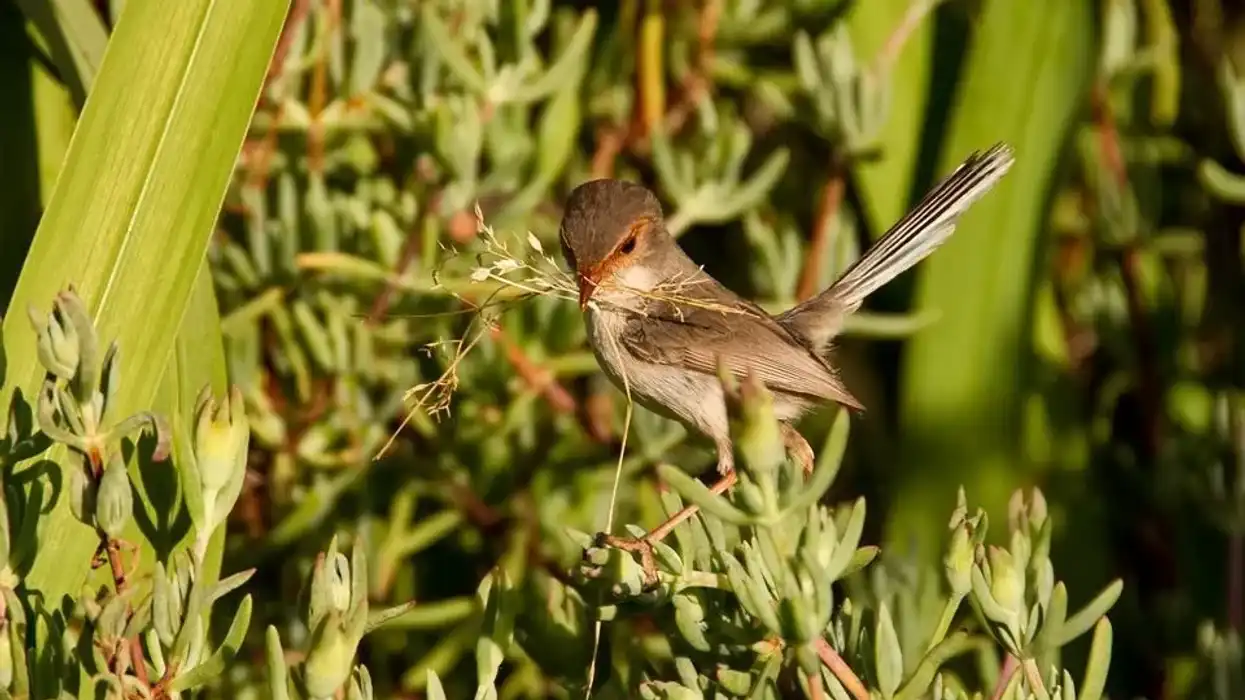A fairy bird or a fairy-bluebird is a blue bird with black wings that are mostly small in size. If this fact interests you, you are going to love reading this article on the Asian fairy-bluebird.
The Asian fairy-bluebird (Irena puella) are former leafbirds that inhabit forest and other areas with nearby trees. As the name suggests, it is an Asian bird and is quite widespread in India and Sri Lanka.
You can also spot the Asian fairy-bluebird in other tropical and subtropical parts of Asia. They are an arboreal species and spotting them in flight is common.
The Asian fairy-bluebird shows strong dichroism and you can easily spot the difference between a male Asian fairy-bluebird and a female Asian fairy-bluebird, just by looking at their coloration. However, both sexes are extremely adorable.
With their small size and colorful plumage, they are considered extremely cute. A good Asian fairy-bluebird photo can be a pleasure to the eyes.
To learn more about this species of former leafbirds, keep on reading. Take a look at cave swiftlet and channel-billed toucan if you are interested in reading about other interesting species.
Asian Fairy-Bluebird Interesting Facts
What type of animal is an Asian fairy-bluebird?
The Asian fairy-bluebird (Irena puella) is a bird that is endemic to Asia. It is a part of the Chordata phylum and the order Passeriformes.
What class of animal does an Asian fairy-bluebird belong to?
Being a bird, the Asian fairy-bluebird belongs to the Aves class of Animalia kingdom. The bird is a member of the family Irenidae and genus Irena. The scientific name given to the bird is Irena puella.
How many Asian fairy-bluebirds are there in the world?
The number of Asian fairy-bluebirds (Irena puella) living in the world is not yet quantified. They are quite common in Asia, mainly in India and Sri Lanka. However, according to the International Union for Conservation of Nature or the IUCN, the population of these former leafbirds has been decreasing over the years.
Where does an Asian fairy-bluebird live?
This fairy-bluebird is found across tropical southern Asia. In this distribution range, it is found in India and Sri Lanka. In India, it is quite widespread in Sikkim, Sawantwadi, Begaum, and Assam. Apart from that, this bird inhabits Khasi Hills, Andaman, and Nicobar Islands. It can also be found in Bangladesh, Nepal, and throughout Indochina.
What is an Asian fairy-bluebird's habitat?
The Asian fairy-bluebird (Irena puella) that is found across tropical southern Asia has its natural habitat in the forest. This blue bird inhabits evergreen forests and can also be spotted in semi-evergreen forests.
It can be found in health forests and degareded forests, however, it generally does not prefer deciduous forests. Other than forests, tropical and subtropical lowlands and rainforests are also home to them.
Spotting this species in plains, hills, coffee plantations and gardens is not uncommon either. Like many other species of birds, it likes living around trees and flowers.
Who do Asian fairy-bluebirds live with?
Asian fairy-bluebirds are quite social and they can mostly be seen in pairs or groups. A group of birds of this species in flight is not an uncommon event in its habitat range. Young immature chicks share their nest with their parents and stay under their care until mature enough to defend themselves.
How long does a Asian fairy-bluebird live?
The Asian fairy-bluebird is known to survive for 10-12 years of age in the wild. This is a fairly long lifespan compared to many species of birds. In captivity, with proper care and diet, their lifespan is known to extend. These birds can live a healthy life up to 15 years in captivity.
How do they reproduce?
In India, the peak breeding season of this blue bird is during the months of February to April. During the breeding season, the females take the responsibility to build the nests. They make a cup-shaped nest with twigs and grasses found in the forest.
The nest is generally not large and has a depth of 1.5 in (3.8 cm). The breeding parents prefer to nest in the middle of the forest.
Both the male and female birds take part in incubation that lasts for about two weeks. The clutch size is two to three eggs. The chicks stay under the protection of their parents until they learn to fly.
The Asian fairy-bluebird is also bred in captivity. In that case, the female is solely responsible for incubating the eggs.
What is their conservation status?
Asian fairy-bluebirds are quite common in their distribution range. Spotting a bird of this species in flight near their habitat is a frequent event.
The International Union for Conservation of Nature or the IUCN or the IUCN has listed them as Least Concern in their Red List. Even though the population trend has shown a decrease, the status of these birds is not threatened yet.
The main reason behind this decrease in population is that they are being threatened by habitat loss and other human activities. Recovery plans are not yet in action for the Asian fairy-bluebird (Irena puella).
Asian Fairy-Bluebird Fun Facts
What does a Asian fairy-bluebird look like?
As the name suggests, the Asian fairy blue-bird has a bright blue plumage, like a mountain bluebird. However, male and female birds have visible differences in their plumage coloration. Male birds of this species have turquoise blue feathers and black underparts.
Apart from the underparts, the flight feathers are also back in male bluebirds. The female, however, has a paler greenish-blue color and lacks the black underparts.
Both sexes have a dark black tail. Apart from the tail, the legs and claws are also blue. They have a bright red iris.
How cute are they?
These former leafbirds with a brilliant blue coloration look extremely attractive. The black tail and bright red iris add to their brilliant looks.
How do they communicate?
Birds use a call and song to communicate with each other. Asian fairy-bluebirds are no different. They have various calls that can be heard in the forest of their distribution range.
How big is an Asian fairy-bluebird?
These fairy-bluebirds are quite small-sized. They can reach a length up to 8.3-10.1 in (21–25.6 cm). Compared to the length of a western bluebird, they are bigger.
How fast can an Asian fairy-bluebird fly?
Being active birds, the Asian fairy-bluebird (Irena puella) can be very commonly seen in flight. They are known for their powerful direct flights. Unfortunately, the exact speed at which the bird flies has not been studied.
How much does an Asian fairy-bluebird weigh?
The weight of males and females of this species varies with the males being slightly bulkier than the females. Males of this species of fairy-bluebirds are known to have a weight of 2-2.7 oz (56.6–76.5 g).
The females, on the other hand, have an average weight of 1.8-2.5 oz (51–70.8g). They are almost the same weight as the fairy tern.
What are the male and female names of the species?
A male Asian fairy-bluebird can be referred to as a cock and a female Asian fairy-bluebird can be referred to as a hen.
What would you call a baby Asian fairy-bluebird?
A baby or young Asian fairy-bluebird is referred to as a chick.
What do they eat?
Asian fairy-bluebirds feed on various fruits like berries and figs. Apart from feeding on these fruits, they take advantage of their powerful flight and prey on various small insects. In fact, the chicks are fed insects by adult parents. After eating insects under the care of their parents, the chicks start eating various fruits after they learn to fly.
Are they dangerous?
Humans are not threatened by the Asian fairy-bluebird in any way. In fact, they are non-aggressive birds that do not pose any danger to anybody, just like a lark sparrow),except for the insects they prey on.
Would they make a good pet?
Asian fairy-bluebirds can be kept as pets under proper care and diet. The young birds should be fed with small insects and then gradually introduced to fruits in their diet. In fact, the life expectancy of this bird is known to increase under proper human care
Did you know...
The Philippine fairy-bluebird belongs to the same family Irenidae and the genus Irena as the Asian fairy-bluebird. In fact, the Philippine fairy-bluebird and the Asian fairy-bluebird are the only two species belonging to this family and genus. The Philippine fairy-bluebird also has a brilliant blue plumage and prefers living near trees.
How to spot female and male Asian fairy-bluebird apart?
Asian fairy-bluebirds are strongly dichromatic. A male of this species has a turquoise coloration with dark black underparts. You can spot a female by their paler greenish-blue feathers that cover their entire body.
How many eggs do Asian fairy-bluebird lay?
This arboreal bird with bright blue feathers that prefer living near trees lays two to three eggs. The eggs are olive-gray or greenish-white in color and have gray and brown markings on them. Asian fairy-bluebird eggs are incubated for two weeks.
Here at Kidadl, we have carefully created lots of interesting family-friendly animal facts for everyone to discover! For more relatable content, check out these Senegal parrot facts and Cooper's hawk facts for kids.
You can even occupy yourself at home by coloring in one of our free printable lovebird coloring pages.
Second image by Savithri Singh










